By Leen Randell
Updated: Jul 19, 2024
10 Best Herbal Creams For Postoperative Recovery
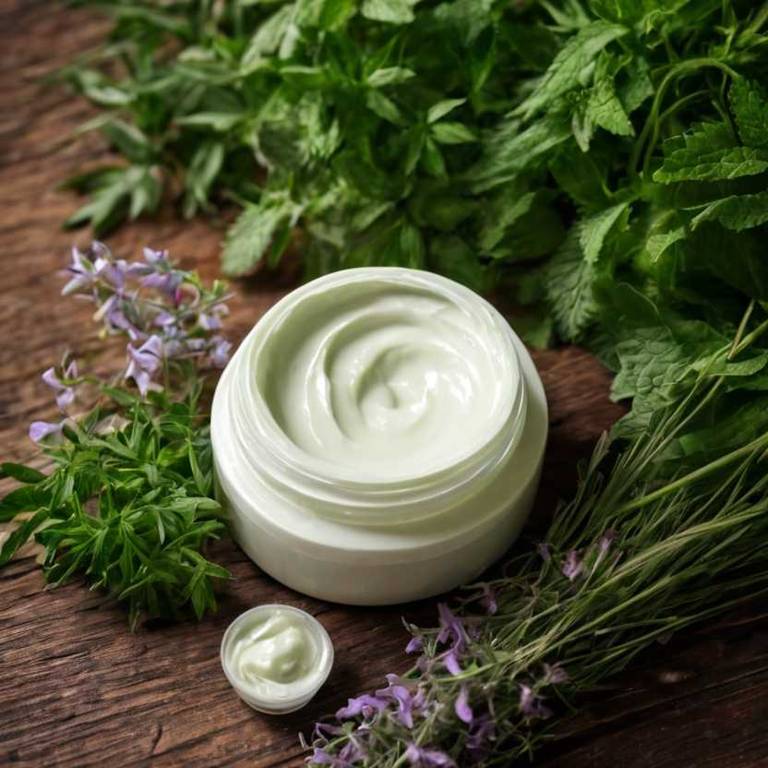
Herbal creams for postoperative recovery are topical applications containing natural herbs and essential oils that aid in the healing process after surgery.
These creams help to reduce inflammation, promote wound healing, and alleviate pain. Examples of herbal creams that help with postoperative recovery include arnica, aloe vera, and tea tree oil.
By using these creams, patients can experience reduced scarring, faster recovery times, and improved overall well-being, ultimately enhancing their quality of life and reducing the need for pain medication.
The following article describes in detail the most important creams for postoperative recovery, including medicinal properties, parts of herbs to use, and recipes for preparations.
- 1. Calendula officinalis
- 2. Arnica montana
- 3. Aloe vera
- 4. Symphytum officinale
- 5. Hypericum perforatum
- 6. Echinacea angustifolia
- 7. Zingiber officinale
- 8. Curcuma longa
- 9. Lavandula angustifolia
- 10. Matricaria chamomilla
- What is the best combination of herbal creams to use for postoperative recovery?
- What ailments similar to postoperative recovery are treated with herbal creams?
1. Calendula officinalis
Calendula officinalis, also known as pot marigold, creams helps with postoperative recovery because of its anti-inflammatory and antimicrobial properties.
The cream soothes and calms irritated skin, reducing redness and swelling. It promotes wound healing by stimulating blood flow and tissue repair. Additionally, calendula's antimicrobial action helps prevent infection, which is particularly beneficial in postoperative wounds.
This natural remedy supports the body's natural healing process, making it an effective and complementary treatment for postoperative recovery.

Medicinal Constituents
The list below shows the primary medicinal constituents in Calendula officinalis creams that help with postoperative recovery.
- Triterpenoids: Help reduce inflammation and promote wound healing by inhibiting the production of pro-inflammatory enzymes and promoting the production of growth factors.
- Flavonoids: Act as antioxidants to reduce oxidative stress, which can help prevent tissue damage and promote healing in postoperative wounds.
- Carotenoids: Help reduce the risk of wound infection by stimulating the production of white blood cells, which play a crucial role in fighting off infections in postoperative wounds.
Parts Used
The list below shows the primary parts of pot marigold used to make creams for postoperative recovery.
- Flowers: They are used due to their high content of triterpenoid saponins, flavonoids, and carotenoids, which have anti-inflammatory and wound-healing properties.
- Leaves: They are used for their antioxidant and anti-inflammatory properties, which help to soothe and calm irritated skin.
- Seeds: They are used for their anti-inflammatory and antiseptic properties, which aid in wound healing and prevent infection.
Quick Recipe
The following recipe gives a procedure to make a basic pot marigold for postoperative recovery.
- Infuse calendula flowers in a carrier oil like sweet almond oil at a ratio of 1:2 for 2 to 4 weeks.
- Strain the infused oil through a cheesecloth or a coffee filter into a clean glass container.
- Combine the infused oil with a thickening agent like beeswax at a ratio of 1:1 and heat the mixture.
- Add a small amount of vitamin e oil and emulsifying wax to the mixture and blend until well combined.
- Pour the cream into a clean glass jar and let it cool and solidify completely before use.
2. Arnica montana
Arnica montana, also known as mountain arnica, creams helps with postoperative recovery because it reduces inflammation and promotes healing.
The active compounds in Arnica, such as sesquiterpene lactones, have anti-inflammatory properties that alleviate pain and swelling. Additionally, Arnica creams improve blood circulation, which accelerates the removal of waste products and promotes the delivery of oxygen and nutrients to the affected area, thereby facilitating faster recovery and reducing the risk of scarring.
This natural remedy is often used to support postoperative recovery after surgeries.
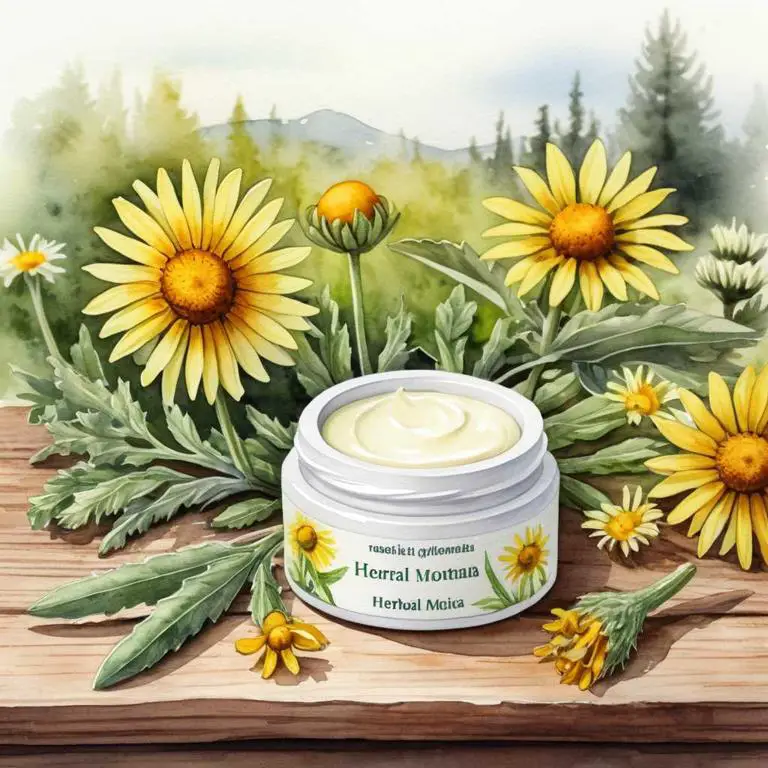
Medicinal Constituents
The list below shows the primary medicinal constituents in Arnica montana creams that help with postoperative recovery.
- Thiophene derivatives: These compounds have anti-inflammatory and analgesic properties, helping to reduce pain and swelling after surgery.
- Flavonoids: Specifically, flavonoids like kaempferol and quercetin have antioxidant and anti-inflammatory effects, which can aid in the healing process and reduce the risk of infection.
- Acetylated arnica triterpenes: These compounds have potent anti-inflammatory and analgesic properties, making them effective in reducing pain and inflammation after surgery, and promoting faster healing.
Parts Used
The list below shows the primary parts of mountain arnica used to make creams for postoperative recovery.
- Flowers: They contain a high concentration of sesquiterpene lactones and flavonoids, which have anti-inflammatory properties that aid in reducing swelling and pain.
- Leaves: They are rich in sesquiterpene lactones and flavonoids as well, making them useful for their anti-inflammatory and pain-relieving effects in postoperative recovery.
- Roots: Although the roots are less commonly used than the flowers and leaves, they still contain sesquiterpene lactones and flavonoids, making them a useful component in creams for postoperative recovery.
Quick Recipe
The following recipe gives a procedure to make a basic mountain arnica for postoperative recovery.
- Infuse 1 cup of fresh arnica montana flowers in 2 cups of carrier oil like jojoba oil for 2 weeks.
- Strain the mixture and discard the solids using a cheesecloth or a coffee filter.
- Combine 1/4 cup of the infused oil with 1/4 cup of beeswax and 2 tablespoons of shea butter.
- Heat the mixture in a double boiler at 100-110 degrees fahrenheit for 10-15 minutes.
- Pour the hot mixture into a sterilized jar and let it cool and solidify completely.
3. Aloe vera
Aloe vera, also known as aloe, creams helps with postoperative recovery because of its anti-inflammatory and soothing properties.
It reduces swelling and redness, promoting the healing process. Aloe vera creams also provide hydration to the skin, reducing the appearance of scars and promoting tissue repair. Additionally, its antimicrobial properties prevent infection and promote a healthy environment for wound healing.
As a result, aloe vera creams are an effective and natural way to aid in postoperative recovery and promote a smooth healing process.

Medicinal Constituents
The list below shows the primary medicinal constituents in Aloe vera creams that help with postoperative recovery.
- Polysaccharides: These help to reduce inflammation and promote wound healing, making them beneficial for postoperative recovery.
- Glycoproteins: These have anti-inflammatory and antimicrobial properties, which help to prevent infection and promote tissue repair after surgery.
- Salicylic acid: This constituent has anti-inflammatory and analgesic properties, which help to reduce pain and swelling after surgery, promoting a smoother recovery.
Parts Used
The list below shows the primary parts of aloe used to make creams for postoperative recovery.
- Leaves: Used due to their high gel content, which provides soothing and anti-inflammatory properties to aid in wound healing.
- Gel (derived from leaves): Not listed, but gel is a major component of the leaf. The gel is used due to its ability to promote skin regeneration, reduce inflammation, and provide hydration.
- Extract (derived from leaves): The extract is used for its anti-inflammatory and antibacterial properties, which help prevent infection and promote healing in postoperative wounds.
Quick Recipe
The following recipe gives a procedure to make a basic aloe for postoperative recovery.
- Gather 3 ounces of aloe vera gel from 2 to 3 mature leaves of aloe vera plant.
- Combine 2 ounces of coconut oil with 1 ounce of beeswax in a double boiler.
- Add 2 tablespoons of distilled water to the mixture and stir gently for 2 minutes.
- Remove the mixture from heat and let it cool to around 120 degrees fahrenheit for 10 minutes.
- Transfer the mixture to a clean container and let it set at room temperature for 30 minutes.
4. Symphytum officinale
Symphytum officinale, also known as comfrey, creams helps with postoperative recovery because it reduces inflammation and promotes tissue repair.
The cream's anti-inflammatory properties soothe pain and discomfort after surgery, while its regenerative properties accelerate wound healing and tissue regeneration. This speeds up the recovery process, allowing patients to return to their normal activities sooner.
Additionally, comfrey cream's anti-inflammatory effects may help reduce the risk of complications such as adhesions and scarring, making it a valuable tool in postoperative care.
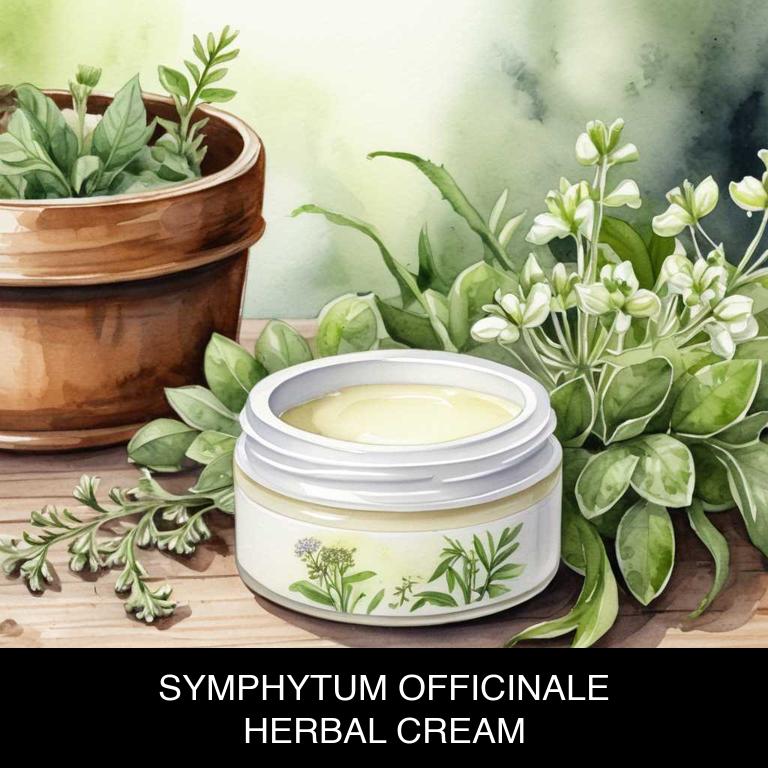
Medicinal Constituents
The list below shows the primary medicinal constituents in Symphytum officinale creams that help with postoperative recovery.
- Alkaloids: These compounds contribute to anti-inflammatory and analgesic effects, which help alleviate pain and discomfort associated with postoperative recovery.
- Iridoid glycosides: These compounds have been shown to exhibit anti-inflammatory and antioxidant properties, which can aid in reducing swelling, pain, and oxidative stress during the recovery period.
- Fatty acids: These compounds have anti-inflammatory effects, which can help reduce inflammation and promote wound healing, thereby facilitating a smoother postoperative recovery.
Parts Used
The list below shows the primary parts of comfrey used to make creams for postoperative recovery.
- Leaves: Containing allantoin, which promotes wound healing and reduces inflammation.
- Roots: Acting as a demulcent, providing a protective barrier to soothe and calm damaged skin.
- Stems: Contributing to the anti-inflammatory properties of the cream, reducing pain and swelling.
Quick Recipe
The following recipe gives a procedure to make a basic comfrey for postoperative recovery.
- Harvest the symphytum officinale roots and leaves in the morning after the dew has evaporated.
- Dry the harvested parts in a warm place with good air circulation for at least 7 days.
- Make a decoction by simmering 1 part of the dried roots in 3 parts of water for 10 minutes.
- Strain the decoction and combine it with 1 part of beeswax and 1 part of coconut oil.
- Heat the mixture in a double boiler until the beeswax has melted and the cream has thickened.
5. Hypericum perforatum
Hypericum perforatum, also known as St John's Wort, creams helps with postoperative recovery because of its anti-inflammatory and analgesic properties.
The plant's bioactive compounds, such as hyperforin and hypericin, have been shown to reduce pain, swelling, and inflammation. This can lead to faster wound healing, reduced scarring, and improved mobility after surgery.
Additionally, the cream's antioxidant properties can help protect the skin from oxidative stress, promoting a smoother recovery and reducing the risk of complications.

Medicinal Constituents
The list below shows the primary medicinal constituents in Hypericum perforatum creams that help with postoperative recovery.
- Hyperforin: This phenolic compound has anti-inflammatory and analgesic properties, which can help reduce pain and swelling, promoting faster recovery after surgery.
- Emodin: A phenolic compound with anti-inflammatory and antimicrobial properties, emodin can help prevent infections and promote wound healing, supporting postoperative recovery.
- Quercetin: A flavonoid with anti-inflammatory and antioxidant properties, quercetin can help reduce inflammation, alleviate pain, and protect against oxidative stress, all of which can contribute to a smoother postoperative recovery.
Parts Used
The list below shows the primary parts of st john's wort used to make creams for postoperative recovery.
- Leaves: Used for their flavonoid and phenolic content, which aids in reducing inflammation and promoting wound healing.
- Flowers: Utilized for their flavonoids, specifically hyperforin and hypericin, which have anti-inflammatory and antimicrobial properties to accelerate recovery.
- Roots: Employed for their sesquiterpenes and flavonoids, which exhibit antioxidant and anti-inflammatory effects to support postoperative tissue repair.
Quick Recipe
The following recipe gives a procedure to make a basic st john's wort for postoperative recovery.
- Harvest 25g of dried hypericum perforatum flowers at peak bloom and dry them in a warm dark place.
- Combine the dried flowers with 250ml of carrier oil such as coconut oil in a clean glass jar.
- Steep the mixture in a cool dark place for 2-4 weeks shaking the jar occasionally to facilitate infusion.
- Strain the oil through a cheesecloth into another clean glass container and discard the solids.
- Mix the infused oil with beeswax 10g and shea butter 20g to create a smooth creamy texture.
6. Echinacea angustifolia
Echinacea angustifolia, also known as Kansas coneflower, creams helps with postoperative recovery because it has anti-inflammatory and immunomodulatory properties.
These properties can aid in reducing pain and swelling, promoting wound healing, and supporting the body's natural defenses. By applying Echinacea angustifolia creams to the affected area, patients can experience relief from discomfort and accelerate their recovery process.
Additionally, its antimicrobial properties can help prevent infection and promote a healthy environment for tissue repair.
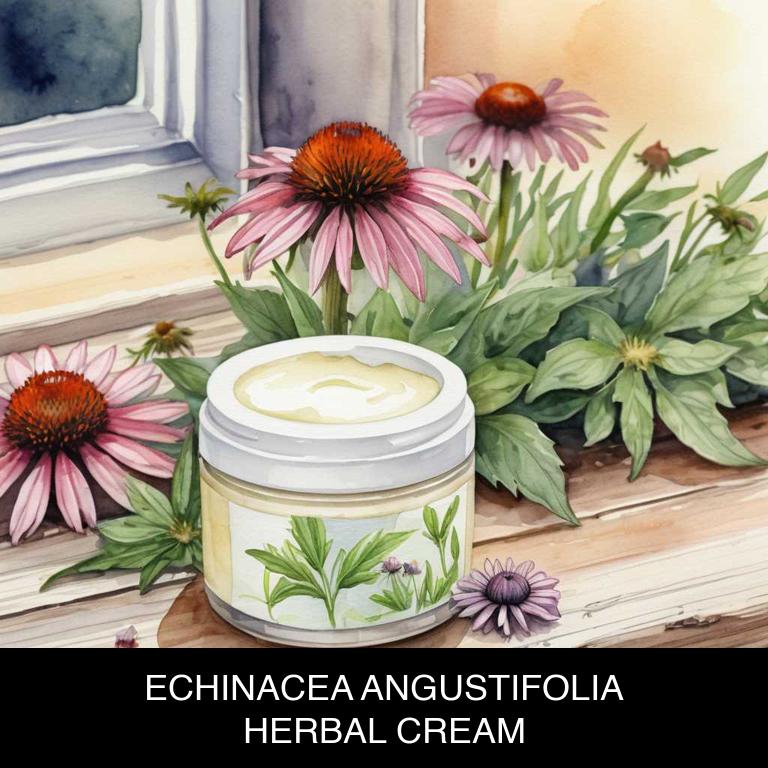
Medicinal Constituents
The list below shows the primary medicinal constituents in Echinacea angustifolia creams that help with postoperative recovery.
- Alkylamides: These non-nitrogenous, alkylated amides help reduce inflammation and alleviate pain, contributing to faster recovery and reduced discomfort after surgery.
- Iridoid glycosides: These compounds have anti-inflammatory properties, which may help minimize tissue damage, reduce swelling, and promote faster healing after surgical procedures.
- Caffeic acid derivatives: These phenolic compounds exhibit antioxidant and anti-inflammatory effects, potentially aiding in the reduction of postoperative inflammation, promoting faster recovery, and minimizing complications.
Parts Used
The list below shows the primary parts of kansas coneflower used to make creams for postoperative recovery.
- Roots: They contain a high concentration of alkylamides, which have anti-inflammatory properties that can aid in wound healing and pain relief.
- Leaves: They are rich in flavonoids, which have antioxidant properties that can help reduce inflammation and promote tissue repair.
- Barks: They contain a range of bioactive compounds, including phenolic acids and glycosides, which have antimicrobial properties that can help prevent infection and promote wound healing.
Quick Recipe
The following recipe gives a procedure to make a basic kansas coneflower for postoperative recovery.
- Harvest 20-30 echinacea angustifolia roots in the fall after the first frost has killed the foliage.
- Dry the harvested roots in a dehydrator at 95°f for 8-12 hours or air-dry for 2 weeks.
- Grind 1 part of dried echinacea roots into a fine powder using a coffee grinder.
- Mix 10% of the ground echinacea powder with 90% of a carrier oil such as coconut or olive oil to create a 10% extract.
- Steep the echinacea extract in a double boiler for 30 minutes to 1 hour to create a herbal cream base.
7. Zingiber officinale
Zingiber officinale, also known as ginger, creams helps with postoperative recovery because of its potent anti-inflammatory and analgesic properties.
The active compounds in ginger, such as gingerol and shogaol, have been shown to reduce pain and swelling, promoting faster healing and recovery. Additionally, ginger has natural antioxidant properties that help to reduce oxidative stress and promote tissue repair.
By applying ginger creams topically, patients can experience reduced discomfort, improved mobility, and faster return to their normal activities post-surgery.

Medicinal Constituents
The list below shows the primary medicinal constituents in Zingiber officinale creams that help with postoperative recovery.
- Gingerols: These sesquiterpenoid compounds have anti-inflammatory properties, which help reduce swelling and pain associated with surgical procedures.
- Shogaols: Similar to gingerols, shogaols also exhibit potent anti-inflammatory and analgesic properties, contributing to a faster recovery from postoperative discomfort.
- Zingiberene: This sesquiterpene has been found to have anti-inflammatory and antioxidant effects, which may help mitigate the oxidative stress and inflammation that can occur after surgery, promoting a smoother recovery.
Parts Used
The list below shows the primary parts of ginger used to make creams for postoperative recovery.
- Roots: Utilized for their ability to aid in pain relief and reduce nausea, common postoperative symptoms.
- Buds: Employed for their high content of phenolic compounds, which possess antioxidant and anti-inflammatory properties beneficial for wound healing and recovery.
Quick Recipe
The following recipe gives a procedure to make a basic ginger for postoperative recovery.
- Weigh 500 grams of cream base in a large mixing bowl and set aside for 5 minutes.
- Infuse 20 grams of dried zingiber officinale rhizomes in 200 milliliters of carrier oil for 2 hours.
- Strain the infused oil through a cheesecloth into a glass container and discard the solids immediately.
- Combine the cream base and infused oil in the mixing bowl and heat the mixture gently for 10 minutes.
- Whip the mixture until it reaches a desired consistency and texture for application within 5 minutes.
8. Curcuma longa
Curcuma longa, also known as turmeric, creams helps with postoperative recovery because of its anti-inflammatory and antioxidant properties.
The curcumin in these creams reduces swelling and pain, allowing patients to heal faster. It also improves wound closure by promoting collagen synthesis and tissue repair. Additionally, the anti-inflammatory effects of curcumin reduce the risk of infection and promote a smoother recovery process, making it an effective addition to postoperative care.
This, in turn, leads to improved overall outcomes for patients.

Medicinal Constituents
The list below shows the primary medicinal constituents in Curcuma longa creams that help with postoperative recovery.
- Curcumin: A polyphenolic compound that helps with postoperative recovery by reducing inflammation and pain due to its potent anti-inflammatory and analgesic properties.
- Demethoxycurcumin: A curcuminoid that aids in the recovery process by exhibiting antioxidant and anti-inflammatory activities, thereby reducing oxidative stress and tissue damage after surgery.
- Bisdemethoxycurcumin: A curcuminoid that plays a crucial role in postoperative recovery by exerting anti-inflammatory and antioxidant effects, thereby reducing the risk of complications and promoting faster wound healing.
Parts Used
The list below shows the primary parts of turmeric used to make creams for postoperative recovery.
- Rhyzomes: The most commonly used part, as they contain the highest concentration of curcuminoids, which have anti-inflammatory and antioxidant properties that aid in wound healing and pain relief.
- Roots: Used for their analgesic and anti-inflammatory properties, which help reduce pain and swelling after surgery.
- Seeds: Utilized for their oil content, which has anti-inflammatory and antioxidant properties that promote skin regeneration and wound healing.
Quick Recipe
The following recipe gives a procedure to make a basic turmeric for postoperative recovery.
- Gather 100g of curcuma longa rhizomes and 200ml of distilled water for the infusion.
- Grate 50g of the curcuma longa rhizomes to release the active compounds for the infusion.
- Combine the grated curcuma longa with 200ml of distilled water in a saucepan and heat over low heat for 30 minutes.
- Strain the curcuma longa infusion through a cheesecloth or a fine mesh to remove the solids and obtain 100ml of liquid extract.
- Mix 20g of beeswax and 50g of shea butter with the curcuma longa liquid extract in a double boiler and heat until the mixture thickens to a creamy consistency.
9. Lavandula angustifolia
Lavandula angustifolia, also known as English lavender, creams helps with postoperative recovery because they promote relaxation and reduce anxiety, which is common after surgery.
The calming effects of lavender can aid in better sleep quality, a crucial aspect of healing. Additionally, lavender creams have anti-inflammatory properties, which can help soothe surgical wounds and promote tissue repair.
By reducing stress and inflammation, these creams can contribute to a smoother and more efficient recovery process, ultimately leading to improved overall health outcomes.

Medicinal Constituents
The list below shows the primary medicinal constituents in Lavandula angustifolia creams that help with postoperative recovery.
- Linalool: This terpene acts as an analgesic and anxiolytic, helping to reduce pain and anxiety that often accompany postoperative recovery.
- Linalyl acetate: This terpene has a sedative effect, promoting relaxation and reducing stress, which can help alleviate symptoms of anxiety and insomnia associated with postoperative recovery.
- Rosmarinic acid: This phenolic compound exhibits anti-inflammatory properties, reducing swelling and pain at the surgical site, and also has antioxidant effects that can help prevent tissue damage and promote healing.
Parts Used
The list below shows the primary parts of english lavender used to make creams for postoperative recovery.
- Leaves: Lavandula angustifolia leaves are used in creams for postoperative recovery because of their anti-inflammatory and calming properties, which help soothe and reduce pain.
- Flowers: Lavandula angustifolia flowers are used in creams for postoperative recovery due to their analgesic and antispasmodic properties, which provide relief from pain and muscle spasms.
- Stems: Lavandula angustifolia stems are used in creams for postoperative recovery because of their antimicrobial properties, which help prevent infection and promote wound healing.
Quick Recipe
The following recipe gives a procedure to make a basic english lavender for postoperative recovery.
- Gather 100g of dried lavandula angustifolia flowers and 100g of a carrier oil such as sweet almond oil.
- Combine the dried flowers and oil in a heat-resistant glass bowl and place it in a double boiler.
- Steep the mixture for 2 hours at a temperature between 45-55°c to extract the herbs' properties.
- Strain the mixture through a cheesecloth or a coffee filter into a clean glass container to remove the solids.
- Whip the infused oil with 20g of beeswax and 10g of shea butter using an electric mixer until smooth.
10. Matricaria chamomilla
Matricaria chamomilla, also known as chamomile, creams helps with postoperative recovery because of its soothing and anti-inflammatory properties.
The cream can help to calm skin irritation, reduce redness, and promote healing. The calming effects of chamomile can also help to alleviate anxiety and promote relaxation, which is essential for a smooth postoperative recovery.
Additionally, chamomile's antimicrobial properties can help to prevent infection and promote a healthy environment for wound healing, making it a valuable addition to postoperative care.
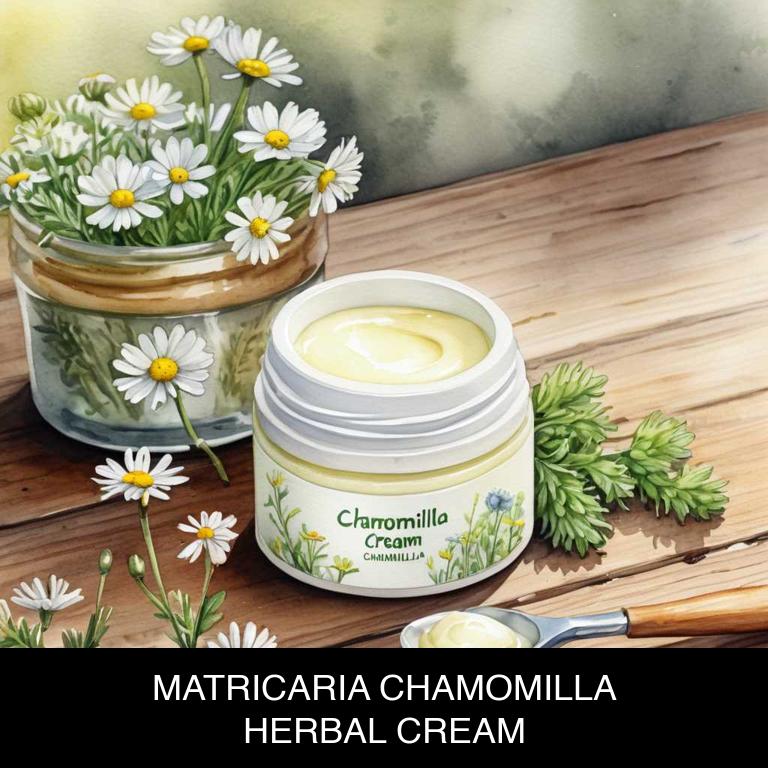
Medicinal Constituents
The list below shows the primary medicinal constituents in Matricaria chamomilla creams that help with postoperative recovery.
- Apigenin: This flavonoid constituent helps with postoperative recovery by reducing inflammation and promoting relaxation, which can alleviate pain and discomfort after surgery.
- Luteolin: As a flavonoid with anti-inflammatory and antioxidant properties, luteolin helps to reduce swelling, ease pain, and promote wound healing after surgery.
- Α-bisabolol: This sesquiterpene constituent has anti-inflammatory and antimicrobial properties, which can help to reduce the risk of infection and promote wound healing after surgery, as well as alleviate pain and discomfort.
Parts Used
The list below shows the primary parts of chamomile used to make creams for postoperative recovery.
- Flowers: They are commonly used due to their high apigenin content, which has anti-inflammatory and soothing properties beneficial for wound healing and pain relief.
- Leaves: Leaves are also used in these creams because they contain flavonoids and terpenoids, which contribute to their anti-inflammatory, antimicrobial, and antioxidant effects, aiding in tissue repair and reducing the risk of infection.
- Seeds: Matricaria chamomilla seeds are sometimes used as well, but their primary role is more limited compared to flowers and leaves; however, they are sometimes used in more specialized applications, such as soothing the digestive system after surgery.
Quick Recipe
The following recipe gives a procedure to make a basic chamomile for postoperative recovery.
- Harvest 250g of dried matricaria chamomilla flowers and prepare them for infusion by cleaning and drying the flowers thoroughly.
- Steep 50g of the dried flowers in 500ml of boiling water for 10-15 minutes to create the herbal tea.
- Strain the tea and discard the solids to obtain 400ml of chamomilla infusion which can be used immediately.
- Mix 200g of beeswax and 200g of coconut oil in a double boiler and heat until the mixture reaches 180 degrees fahrenheit.
- Add 100ml of the chamomilla infusion to the melted beeswax mixture and stir well before pouring into jars and allowing to cool.
What is the best combination of herbal creams to use for postoperative recovery?
The best combination of herbal creams that help with postoperative recovery is a blend of arnica, calendula, and aloe vera.
Arnica cream reduces inflammation and promotes healing, while calendula cream soothes and calms the skin. Aloe vera cream provides hydration and accelerates the recovery process.
Using these creams in combination can help alleviate pain, minimize scarring, and promote faster wound healing. This natural approach can also reduce the risk of complications and promote a smoother recovery.
They work synergistically to support the healing process.
What ailments similar to postoperative recovery are treated with herbal creams?
Ailments similar to postoperative recovery that are treated with herbal creams are chronic wounds, burns, and skin ulcers.
Herbal creams containing ingredients like aloe vera, tea tree oil, and turmeric can help soothe and accelerate healing of these conditions by reducing inflammation, promoting collagen synthesis, and preventing infection.
These natural remedies can also alleviate pain and discomfort associated with these ailments.